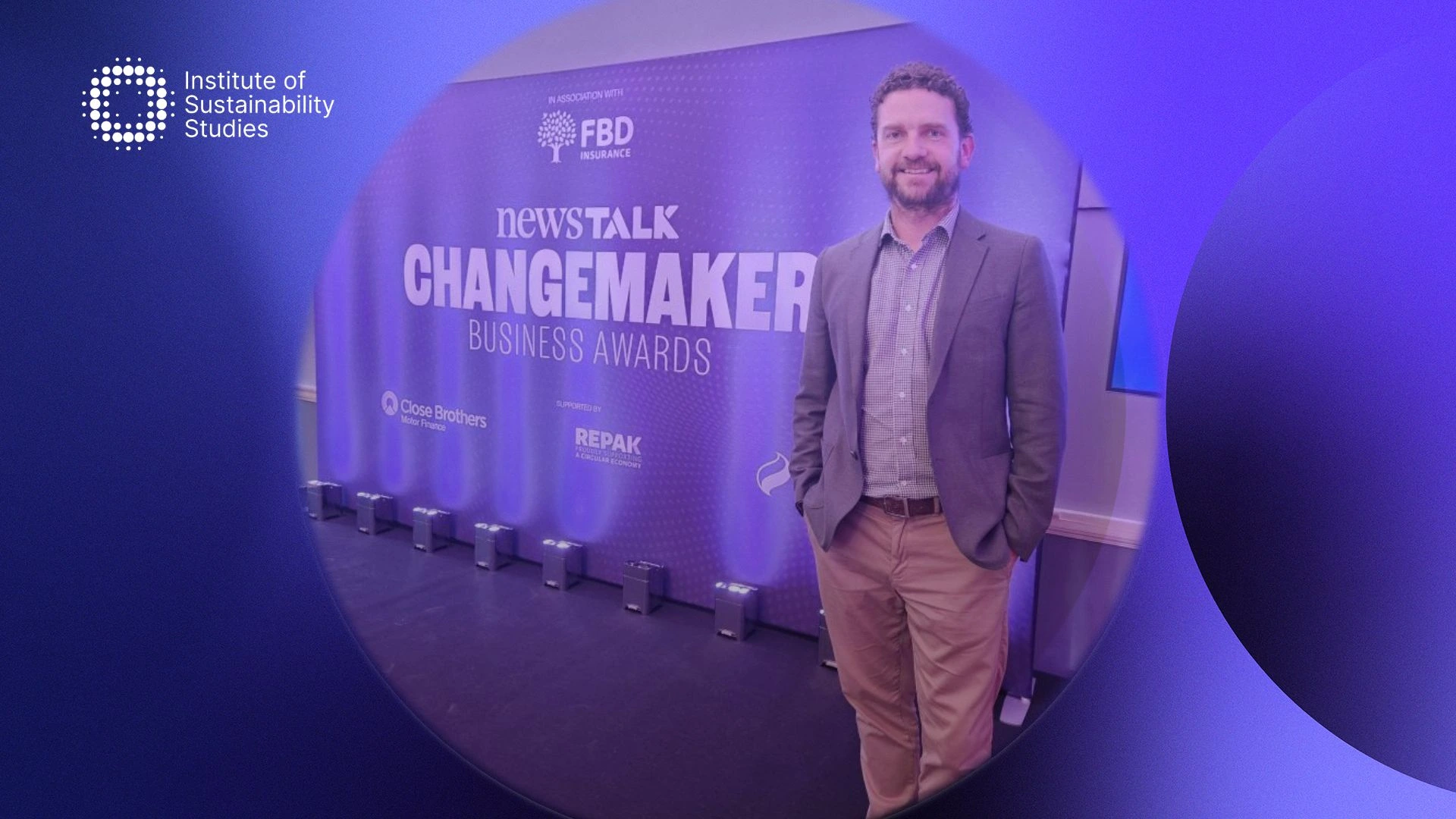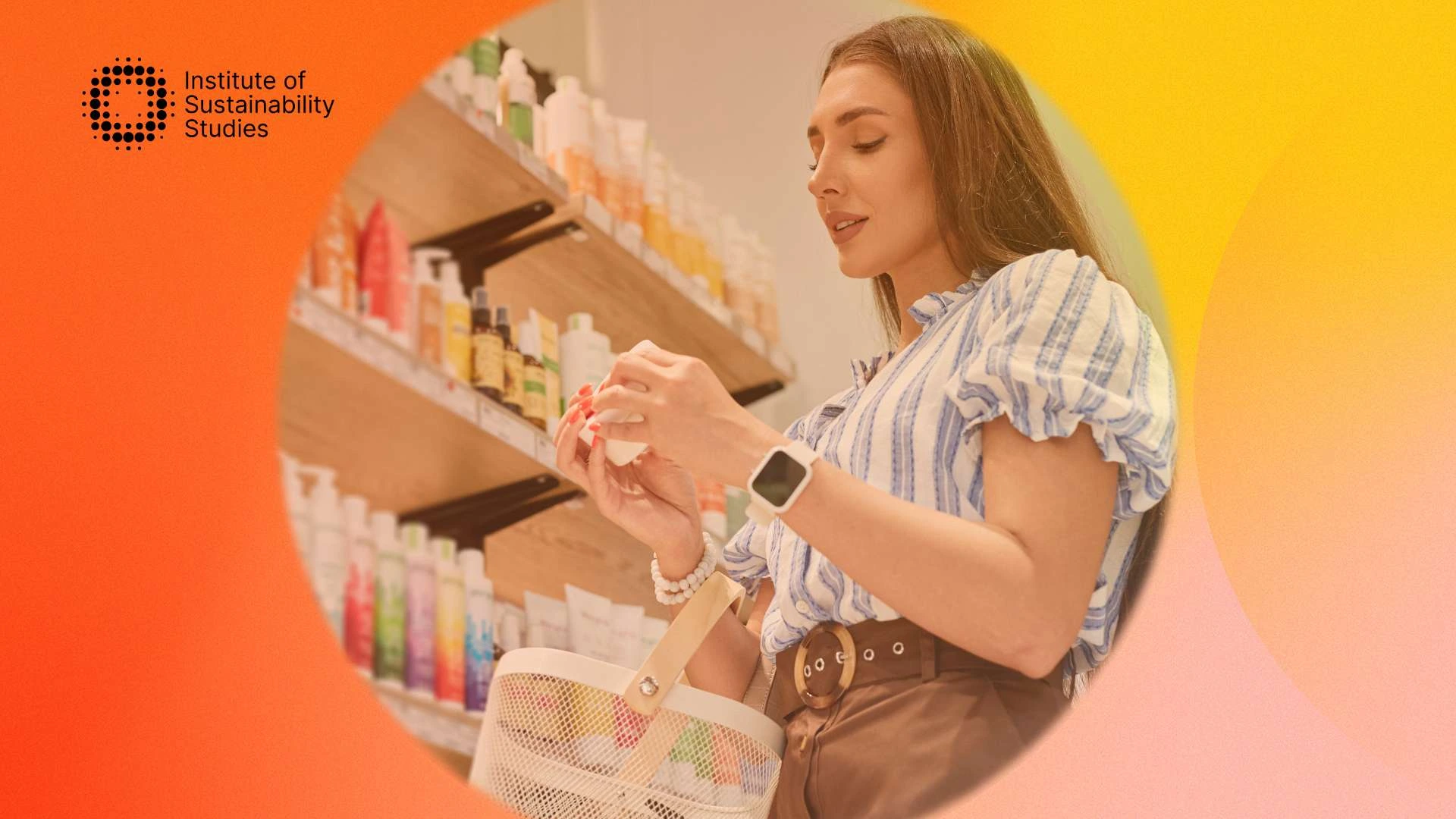Making bags from reclaimed truck tarpaulins and aeroplane seat parts
Jump The Hedges is a slow design studio based in Belfast. They are mostly known for their bags made from untraditional materials like reclaimed aeroplane seat parts and truck tarpaulins. However, founder Síofra Caherty is also driven to use the brand as a platform to speak on and drive sustainable activism in the form of workshops on sustainable design and living.
Reflecting on her background before she started Jump The Hedges, Síofra says: “I am from a small village in South Armagh near the Irish border. I was brought up very conscious of the environment and the impact I could have on it in both a positive and negative way. I studied Fashion Design at the National College of Art and Design (NCAD) and worked for Portwest, Levi’s and Adidas before starting my own business. I have always loved clothing, however, I felt conflicted due to its huge environmental impact. I started Jump The Hedges in response to this frustration; I wanted to create a fashion company that impacted positively.”
Finding the right materials and growing acceptance of recycled materials
When Síofra was setting up Jump The Hedges, she initially wanted to use very technical Japanese fabrics but quickly noticed a lot of good material going to landfill that was available locally. She shares: “I started to use reclaimed banner cloth and truck tarpaulin, so spent a lot of time wandering around trailer yards, cold calling trucking companies and generally harassing lorry drivers! Eventually, I established a supply chain and now, people come to me when they have tarps they think I might like.”
“This was nine years ago, so initially, people did not really understand why I was using the recycled material. A handful of other brands were using similar materials. However, it was unusual to see them in the Irish market. I continued to sell (very little) at markets, led workshops, and spoke at events explaining my own work and how people could become more aware of their environmental impact.”
Síofra also set up the Hedge Notes Newsletter as a means to communicate her message outside social media. She shares that while it was slow in the beginning, people eventually became aware of her and started to understand what she was doing. During the COVID-19 pandemic, she started a drop system, and this is when she noticed her brand really ‘taking off’.
The challenges of running a slow design fashion studio
Drawing on the challenges of being a slow design studio, Síofra explains: “Using the recycled material is very challenging. You only know whether it is suitable after you have prepped it, cut it and industrially washed it. Also, this is on its way to landfill for a reason, so it could be very damaged. Now and again, I get some great tarpaulin that can keep me going for a couple of months.”
Síofra also faced some challenges with her Farm to Garment Project as she wanted to achieve a fully transparent supply chain. The Farm to Garment project is a two-year project which recognises each pair of hands that participate in the making of a garment.
She explains: “This does not really exist unless the spinning mill has taken an initiative to collaborate with the farmers growing the fibre. After many months of research, I discovered a Greek Company, but they didn’t want to work with me because I was requesting such small quantities. The measures I took in this instance was to jump on a train to Northern Greece and convince the factory manager to let me purchase a tiny quantity for my transparency project and in the end, it worked.”
Touching on why sustainability is so important to her business, Síofra shares that sustainability life. She says: “It is not about recycling or eating organic food; it is about living in a way that is both sustainable for you personally and the environment around you. The term sustainability has become so convoluted and falsified over the past number of years that I almost avoid using it. Trying to do things the ‘right’ way is hugely challenging.”
“However, there would be no point in running my business otherwise. The greenwashing movement is making it difficult for businesses like mine to stand out and continue to exist. My hope is that the future fashion transparency legislation that is in the pipeline will allow businesses like me to stand out from the greenwashing conglomerates.”
Key drivers to implement sustainability and the importance of education for change
Síofra’s key drivers to implement sustainability in her business were realised when she worked as a Designer at Adidas a decade ago. She shares: “I noticed we were starting to use sustainable fabrics. I continued to go to fabric trade fairs and always went to the ‘sustainable’ section, which thankfully has grown bigger and bigger. However, it was always next to impossible to trace the fabrics. I read articles that revealed huge issues in the certifications of organic cotton from India and articles on the Uyghur cotton slaves. All of this drove me to develop my Farm to Garment T-shirt project.”
The key success indicators that showed Síofra that the sustainability of the business was working were that people were very engaged, interested and curious. She recognises that the fashion industry is several years behind the food industry but that, in time, we will have images of our fibre farmers alongside our clothing in the same way we have images of our food farmers next to our food in supermarkets.
Síofra sees education as vitally important for driving sustainable change. She identifies as a lifelong student, listening to podcasts daily and reading books on climate change and environmentalism. Síofra also teaches a cohort of students at NCAD about the implications of fast fashion and the importance of sustainability. She says: “I am delighted I can have an impact on these students. It means the next generation are implementing sustainability from the get-go and are hugely conscious of their environmental impact.”
The next steps for Jump The Hedges and guidance to other eco-conscious businesses
Speaking on the next goals for her brand, Síofra shares she will continue to source materials that are technically advanced for their low environmental impact and carry out using Jump The Hedges as a platform for environmental awareness. Her advice to other businesses ready to get started and implement sustainability is: “Go with the flow or be dragged! The world is moving at brake-neck speed, and being sustainable is no longer an option but vital.”
Síofra Caherty’s journey with Jump The Hedges is a powerful testament to how one person’s commitment to sustainability can ignite change and inspire others. From reclaiming materials destined for landfill to educating the next generation on the importance of sustainable design, Síofra’s work shows that creativity and environmental responsibility can go hand in hand. For anyone inspired by Síofra’s story, the takeaway is simple yet profound: sustainability is not just about doing less harm; it’s about actively doing good.
_____
Want to read more business spotlights?










